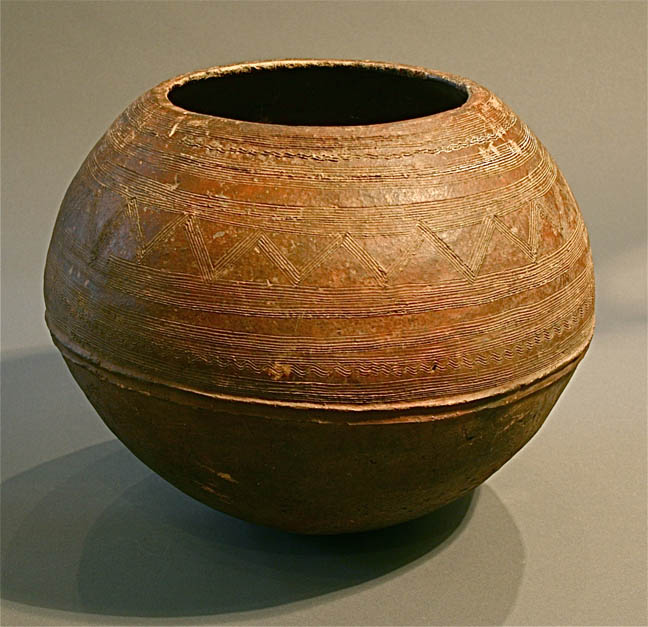

Title: Antique Handmade Terra-cotta African pot From nupe nigeria
Shipping: $45.00
Artist: N/A
Period: 20th Century
History: N/A
Origin: N/A
Condition: Museum Quality
Item Date: 1900 1930
Item ID: 2420
A wonderful handmade antique terra-cotta pot vessel from nupe nigeria, Africa. Notable differences include the obvious variations in shape, there are rare and cool designs on the top of the bowl. The bases are all rounded so the woven supports, similar to what would aid in carrying filled vessels on the head, are included. There is a small repair on the top of the lip.
Link: http://en.wikipedia.org/wiki/Pottery
Pottery is the ceramic ware made from clay by potters. Major types of pottery include earthenware, stoneware, and porcelain. The places where such wares are made are called potteries. Pottery is one of the oldest human technologies, and remains a major industry today. Pottery is made by forming a clay body into objects of a required shape and heating them to high temperatures in a kiln to induce reactions that lead to permanent changes, including increasing their strength and hardening and setting their shape. There are wide regional variations in the properties of clays used by potters and this often helps to produce wares that are unique in character to a locality. It is common for clays and other minerals to be mixed to produce clay bodies suited to specific purposes. Firing produces irreversible changes in the body. It is only after firing that the article can be called pottery. In lower-fired pottery the changes include sintering, the fusing together of coarser particles in the body at their points of contact with each other. The atmosphere within a kiln during firing can affect the appearance of the finished wares. An oxidising atmosphere, produced by allowing air to enter the kiln, can cause the oxidation of clays and glazes. A reducing atmosphere, produced by limiting the flow of air into the kiln, can strip oxygen from the surface of clays and glazes. This can affect the appearance of the wares being fired and, for example, some glazes containing iron fire brown in an oxidising atmosphere, but green in a reducing atmosphere. The atmosphere within a kiln can be adjusted to produce complex effects in glaze. Kilns may be heated by burning wood, coal and gas, or by electricity. When used as fuels, coal and wood can introduce smoke, soot and ash into the kiln which can affect the appearance of unprotected wares.